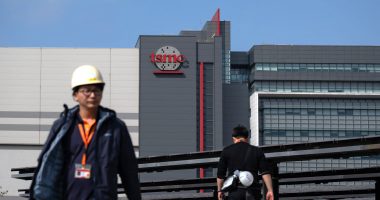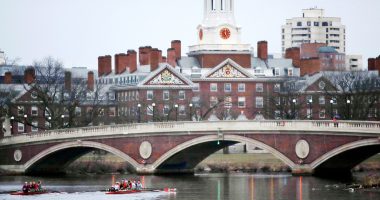
An analysis of police department statistics has revealed that the United States experienced a significant hike in anti-Asian hate crimes last year across major cities.
The analysis released by the Center for the Study of Hate and Extremism at California State University, San Bernardino, this month examined hate crimes in 16 of America’s largest cities. It revealed that while such crimes in 2020 decreased overall by 7 percent, those targeting Asian people rose by nearly 150 percent.
Karthick Ramakrishnan, founder and director of demographic data and policy research nonprofit AAPI Data, told NBC Asian America that while the uptick cannot be entirely attributed to the Trump administration’s incendiary, racist rhetoric about the coronavirus, he believes former President Donald Trump’s wielding of the fact that the virus originated in China and repeated elevation of the “China virus” rhetoric did play a part in fostering hate.
“What Trump did is that he weaponized it in a way,” Ramakrishnan said. “Trump’s rhetoric helps set a certain narrative in place — and presidents have an outsized role in terms of shaping narrative. They don’t call it a bully pulpit for nothing, and especially Trump, the way he frequently used Twitter as well as press conferences and off-the-cuff remarks to campaign rallies to frame the narrative in a particular way, it likely played a role.”
The analysis revealed a surge in cities such as New York, where anti-Asian hate crimes rose from three in 2019 to 28 in 2020, a 833 percent increase. Los Angeles and Boston also experienced notable rises, from seven to 15 and six to 14, respectively. Meanwhile, Washington, D.C., experienced a decline from six to three anti-Asian hate crimes. Chicago remained unchanged, with two crimes each year.
Though New York accounts for a sizable portion of the increase, Ramakrishnan said the increases in other cities are significant.
“We also know that first-generation immigrants tend to underreport acts of racial discrimination and hate crimes, but the fact that we are talking about change data suggests a meaningful shift that likely means not just greater reporting, but actually greater occurrence,” he said.
According to the analysis, it’s likely that overall hate crimes declined due to the pandemic and a subsequent lack of interaction in public areas and other gathering places including public transit, commercial businesses, schools and houses of worship.
The first spike in anti-Asian hate crimes occurred in March and April last year. However, it occurred alongside a rise in Covid-19 cases and ongoing negative associations of Asian Americans with the virus, the analysis noted.
Ramakrishnan explained that research on Trump’s use of racist language in reference to other groups shows that his language did have a profound impact on how people behave toward marginalized groups.
He said a 2020 study that examined Trump’s comments about Mexican immigrants during his presidential campaign — when he referred to them as “rapists” and declared that “when Mexico sends its people, they’re not sending the best” — found that the inflammatory remarks emboldened certain members of the American public and gave them license to express deeply held prejudices. Researchers dubbed this the “Trump effect” or “emboldening effect.”
“Trump’s rhetoric on Latinos in 2016 actually changed people’s attitudes and behavior towards Latinos,” Ramakrishnan, who worked on the study, said. “So they were more likely to be punitive towards Latinos in the workplace.”
A separate study revealed that the use of “China virus” language to refer to the coronavirus, particularly by GOP officials and conservative outlets, has already resulted in a shift in how many people in the U.S. perceive Asian Americans. The significant uptick in discriminatory coronavirus speech that occurred on March 8 — the day Rep. Paul Gosar, R-Ariz., tweeted about the “Wuhan virus,” which coincided with then-Secretary of State Mike Pompeo’s interview the day before on “Fox and Friends” in which he referred to the “China virus” — was followed by a rapid reversal of a decadelong decline in anti-Asian bias.
“Research suggests that when people see Asian Americans as being more ‘foreign,’ they are more likely to express hostility toward them and engage in acts of violence and discrimination,” Rucker Johnson, a public policy professor at the University of California, Berkeley, and co-author of the study, previously told NBC Asian America.
The new report, however, compares figures from 2019 and 2020, which does not include recent graphic attacks on Asian American elders earlier this year that have prompted significant media coverage in recent weeks. Many outlets have attributed the attacks to rhetoric that Trump used during his tenure. But Ramakrishnan cautioned against defaulting to a “simplistic understanding of what’s going on.”
“There’s a complex variety of factors, but the fundamental reality is that there’s an increase in the number of Asian Americans who feel unsafe,” he said.
He said more data on the current situation will become available in another year, and until then, it’s difficult to definitively declare that there’s been an increase in hate crimes of late. It’s possible, Ramakrishnan said, that what Asian Americans were going through a year ago was just as bad or worse but failed to receive the kind of media attention they’re getting now.
He also said there’s likely a confluence of factors that have contributed to the recent attacks on elders, and it cannot be neatly summed up by solely the heightened anti-Asian sentiment witnessed throughout the pandemic.
Ramakrishnan said there could be a combination of the effects of poverty and financial struggle as well as opportunity at play.
“Not everyone reacts to economic deprivation in the same way. And even if someone wants to do something, they might not find the opportunity to do it. So in some ways, Asian elders seem to be softer targets than others for this activity,” he said.
The availability of vaccines for older people, along with Lunar New Year festivities and shopping, could have contributed to more older Asian Americans being out in the community, Ramakrishnan said. And many of the older victims were attacked in areas that had already struggled prior to the pandemic and were hit particularly hard by the economic impacts of the virus.
“Many of these Chinatowns are in places that are low income and also suffering economically. So that might be one set of explanations as to why this phenomenon is taking this particular shape,” he said. “On top of that, we live in an age of viral social media, and … especially the shock value of some of these videos increases awareness and maybe anxiety in the community.”
Source: | This article originally belongs to Nbcnews.com










